Polyunsaturated Conjugated Fatty Acids: How To Use Them For Your Benefit
Conjugated fatty acids are polyunsaturated fatty acids in which at least one pair of double bonds is separated by only one single bond. Polyunsaturated fatty acids (PUFAs) are mainly found in our cell membranes.
These fatty acids we describe below are all members of the polyunsaturated fatty acids family.
Tip! If you are looking for a specific polyunsaturated fatty acid, I recommend you use the expanded toc to find it.
Table of Contents
Benefits Of Polyunsaturated Fatty Acids
Polyunsaturated fatty acids possess numerous health benefits we all need. For instance, polyunsaturated acids have anti-inflammatory properties.
Polyunsaturated fatty acids are also vital for neuronal health ◳. Neuron membranes contain a large amount of long-chain polyunsaturated fatty acids, and altering that composition can lead to neuronal diseases.
Our Articles On Conjugated Polyunsaturated Fatty Acids
Below you will find a list of polyunsaturated fatty acids. You can find out what they are and what they might be able to do for you.
Conjugated linoleic acids, CLA (18:2) can be good for your heart
Conjugated linoleic acid (CLA) is found abundantly in fats from ruminants. Learn more about CLA in What Is Conjugated Linoleic Acid, CLA (18:2) & What Foods Can I Find It In?
It possesses many health benefits. For instance, it might aid in modify body composition and cardiometabolic risk factors. Find out more in Conjugated Linoleic Acid, CLA (18:2): 5 Research-Backed Benefits
18:2 i is the nameless acid which are not generally recognized as safe
18:2 i is one of the few fatty acids without a name. You can find more information about this nameless fatty acid in What Is 18:2 i & What Foods Can I Find It In?
18:2 i is found mostly in partially hydrogenated vegetable oils, which are not generally recognized as safe, categorized by the United States Food and Drug Administration. You can see the side-effect in 18:2 i: One Research-Backed Side-Effect
Linolenic acid (18:3) for growth and development
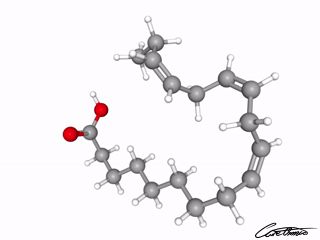
Linolenic acid is an essential fatty acid. Learn more about it and look at the research behind it in What Is Linolenic Acid (18:3) & What Foods Can I Find It In?
Linolenic acid is needed to optimize growth and development, among many other health benefits. Check out the benefits and side-effects of linolenic acid in Linolenic Acid (18:3): 5 Research-Backed Benefits & 2 Side-Effects
Parinaric acid (18:4) may be toxic to some carcinogenic cells
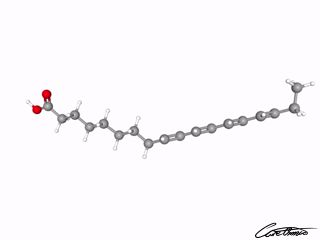
Parinaric acid has fluorescent properties. Find more information about parinaric acid in What Is Parinaric Acid (18:4) & What Foods Can I Find It In?
Parinaric acid seems to be toxic to some carcinogenic cells. Check it out in Parinaric Acid (18:4): One Research-Backed Benefit
Eicosatrienoic acid, ETE (20:3) can induce immune responses
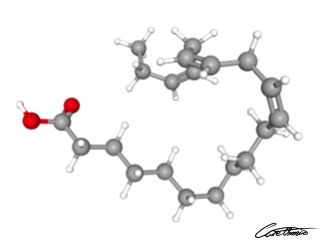
Eicosatrienoic acid is quite rare. Read more about it in What Is Eicosatrienoic Acid (20:3) & What Foods Can I Find It In?
Eicosatrienoic acid is an eicosanoid. Together with other eicosanoids, it can induce inflammatory immune responses. Read some more in Eicosatrienoic acid (20:3): 2 Research-Backed Side-Effects
Eicosatetraenoic acid, ETA (20:4) for the central nervous system
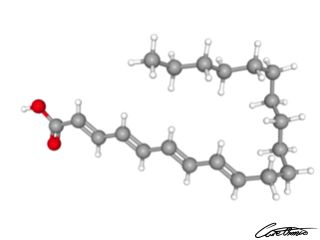
Eicosatetraenoic acid is an essential fatty acid. You can find more information about this fatty acid in What Is Eicosatetraenoic Acid, ETA (20:4) & What Foods Can I Find It In?
Eicosatetraenoic acid is vital for the development and optimal performance of the central nervous system. Check this out and other benefits and side-effects that eicosatetraenoic acid has in Eicosatetraenoic Acid, ETA (20:4): 4 Research-Backed Benefits & One Side-Effect
Heneicosapentaenoic acid (21:5) is found in fish oils
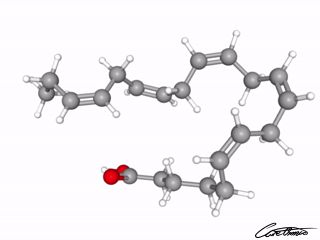
Heneicosapentaenoic acid is quite rare. You can find it in small amounts in fish oils. But if that gives any health benefits is still unclear.
You can find more information about heneicosapentaenoic acid in What Is Heneicosapentaenoic Acid (21:5) & What Foods Can I Find It In?
Docosadienoic acid (22:2) is a DNA inhibitor
Docosadienoic acid has a role as a metabolite. You can find some more information about docosadienoic acid in What Is Docosadienoic Acid (22:2) & What Foods Can I Find It In?
Docosadienoic acid is a strong inhibitor of some enzymes that are needed for synthesizing DNA. Look at its side-effect in Docosadienoic Acid (22:2): One Research-Backed Side-Effect
dihomo Mead acid (22:3) is especially important for infants
dihomo Mead acid is often added in formulas and breast milk substitute to compensate for the lack of the fatty acid DHA
See some more information about it in What is dihomo Mead Acid (22:3)?
Or check out the benefit of dihomo Mead acid in dihomo Mead Acid (22:3): One Research-Backed Benefit
Adrenic acid, AdA (22:4) for the brain
Adrenic acid is a naturally occurring fatty acid that is needed by the brain. Read more about it in What Is Adrenic Acid (22:4) & What Foods Can I Find It In?
Adrenic acid has some benefits that you can check out in Adrenic Acid, AdA (22:4): 2 Research-Backed Benefits
